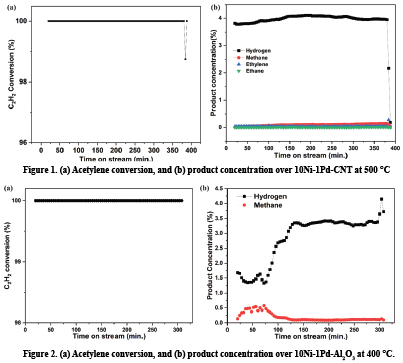2022 Annual Meeting
(396f) Microwave Catalytic Conversion of Acetylene for Co-Production of Hydrogen and Carbon Nanotubes
Authors
Jiang, C. - Presenter, West Virginia University
Balyan, S., Indian Institute of Technology
Caiola, A., West Virginia University
Hu, J., West Virginia University
Single step natural gas conversion to value added product can drastically reduces the carbon footprint of chemical processing industries. Microwave plasma reactors (MWP) is an emerging process intensification for chemical industries to directly convert methane (CH4), the major component of natural gas and offers benefits such as fast process dynamics, flexibility, high product yield and retards formation of unwanted by products during process intensification. MWP generated from CH4 results to produce large amount of acetylene, which is mainly used in welding. To add value to acetylene from the downstream of methane plasma reactor, a novel approach towards formation of carbon nano tubes (CNT) and pure hydrogen (H2) on bimetallic catalyst driven by microwave irradiation is studied. The preliminary data showed that the acetylene can be converted to carbon and hydrogen (Figure 1). The dominant gas product was hydrogen (~4 mol % concentration). Low concentrations of methane, ethane, and ethylene were observed in product stream. To further examine that the deposited carbon is in CNT form we have carried out acetylene pyrolysis at 400 °C over 10Ni-1Pd-Al2O3 (Figure 2) supported catalyst. From results it is verified that at 400 °C acetylene can be dehydrogenated with hydrogen as dominant gas with 3.2 mol% concentration in product stream at 150 minutes time on stream for 10Ni-1Pd-Al2O3 catalyst. We have further carried out characterization tools such as Raman spectroscopy, and TEM further access the property of carbon deposited over the catalyst during acetylene pyrolysis.


